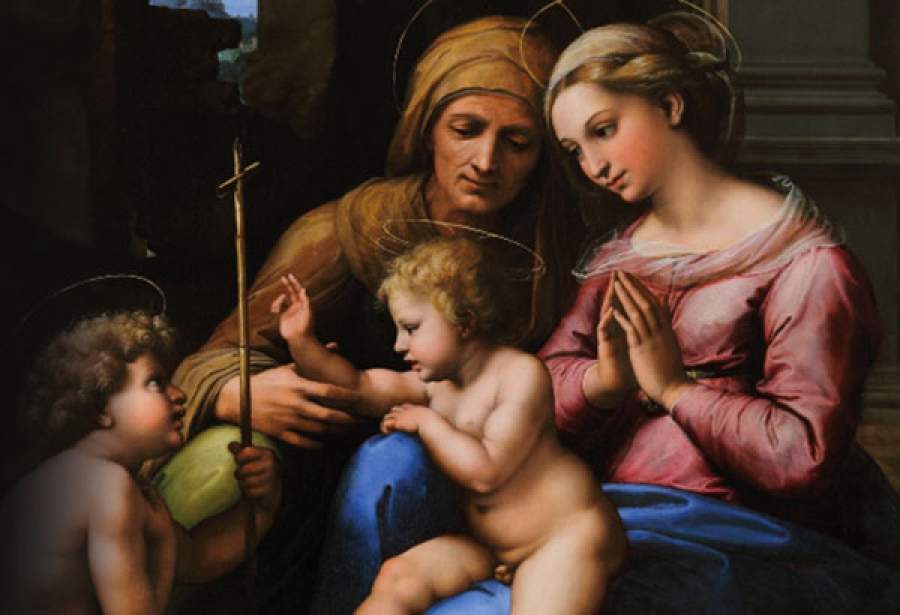The Museo e Real Bosco di Capodimonte in Naples is hosting until September 13 the exhibition Raphael at Capodimonte: the artist’s workshop, curated by Angela Cerasuolo and Andrea Zezza, as part of the celebrations for the 500th anniversary of the artist’s death, and aims to enhance the Museum’s Raphael heritage, which is much richer and more varied than we usually think.
The tour offers the public new findings from the campaign of diagnostic investigations conducted in the Museum, thanks to important institutional collaborations (the basis of this exhibition) that will allow an original approach to both the works of art and the work of the artist’s workshop and those of his followers, highlighting the complex work behind the creation of originals, multiples, copies, and derivations.
The Museo e Real Bosco di Capodimonte, in fact, preserves a number of important autograph works, which make it possible to exemplify the main moments of the artist’s career: The Eterno and the Virgin, two fragments of the St. Nicholas of Tolentino Altarpiece (1500-1501) the first known work by the 17-year-old Raphael, painted for the church of Sant’Agostino in Città di Castello, which was destroyed in the late 1700s; the Portrait of Alessandro Farnese (c. 1511), the young cardinal who many years later would become the powerful Pope Paul III; the Moses and the burning bush (1514), a preparatory cartoon executed for the fresco on the vault of the Stanza di Eliodoro in the Vatican; the Madonna del Divino Amore (1516-18), one of the artist’s most admired paintings during the sixteenth century, which then fell into oblivion and was only recently rescued, thanks in part to scientific investigation and restoration, from the critical misfortune into which it had fallen in the twentieth century.
But Capodimonte also preserves a fundamental work by Giulio Romano, Raphael’s principal pupil, the Madonna of the Cat (c. 1518-1520), executed following a model by the master, and of which diagnostic investigations help to better understand both the complex genesis of its execution and the causes of the problems that have made its preservation problematic.
A series of copies, derivations, and multiples, some of which may have been elaborated in the artist’s own workshop(Madonna del Passeggio, Madonna del Velo), others by the hands of first-rate artists for important patrons-it is the case of the famous copy of Andrea del Sarto ’s Portrait of Leo X-where the notion of “copy” skirts that of “author’s forgery,” and which Vasari said would have fooled Giulio Romano himself-or perhaps for practice, such as the St. Joseph from the Madonna of the Veil made by Daniele da Volterra.
These, along with others made by more mechanical copyists (Bridgwater Madonna) allow a wide-ranging exploration of this type of production, which constituted a large part of the work of the workshops of the sixteenth and seventeenth centuries and which today forms a huge, though often overlooked, part of our artistic heritage.
For all information you can visit the official Capodimonte website.
Pictured: Raphael, Madonna of Divine Love, detail (1516-18; oil on panel, 140 x 109 cm; Naples, Museo Nazionale di Capodimonte)
 |
| Naples, at Capodimonte Museum a focus on Raphael paintings in the collection |
Warning: the translation into English of the original Italian article was created using automatic tools. We undertake to review all articles, but we do not guarantee the total absence of inaccuracies in the translation due to the program. You can find the original by clicking on the ITA button. If you find any mistake,please contact us.